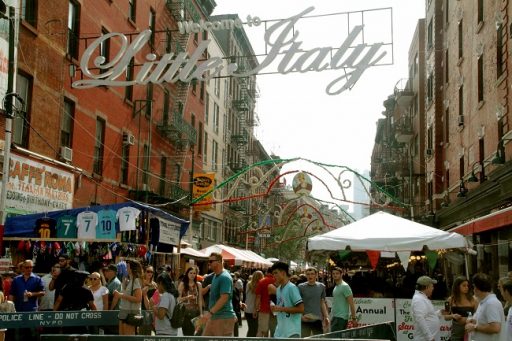By Joseph M. Calisi ©2022 All Rights Reserved
March 14, 2022, Little Italy, Manhattan, NYC
An organized anti-Italian sentiment has seemingly appeared for the fourth time in recent months. This latest effort is led by New York Governor Hochul, who omitted Little Italy in Lower Manhattan from a $20 million New York City regional economic development grant to nearby Chinatown. In fact, both areas were merged into the Chinatown and Little Italy Historic District, as the area has both ethnic areas with each other’s stores intermingled in the narrow streets that comprise it.
The previous instances were the eliminated office of Italian-American Affairs (since rescinded) and the removal of former Governor Mario Cuomo’s wife (Matilda Cuomo) as an advisor from the state website mentoring program she founded, and the renaming of Columbus Day to include Indigenous People Day.
New York State includes an Italian population of 12%, which represents a significant voting block.
Merchants along Mulberry Street, which acts as the spine of this historic district, are screaming foul. In addition to this, ex-Manhattan Borough President Gale Brewer, who is now a councilwoman representing the Upper West Side, chimed in as she originally submitted the $20 application but only for Chinatown as that area has seen a disastrous drop in tourism due to the virus and an anti-Asian mood in general.
The award and protest have been simmering especially in recent weeks when Victor Papa, chairman of the Chinatown-Little Italy Historic District Improvement Association, wrote a letter on March 8 to the NY Governor.
It has become apparent the recent snubbing of those of Italian heritage by the state government has become a recurring bad habit.
Dr. Joseph V Scelsa, Founder and President Italian American Museum in New York City’s Little Italy commented on the situation by saying, “Constructive Pluralism requires each group to share their culture in our city. Not the favoring of one group over another. When I was Dean of the Italian American Institute at CUNY, I advocated and helped the Asian American Research Institute to become a part of the City University of New York. While we need to promote our own cultures, we must strive to include other cultures if we are to have a truly constructive pluralistic society.”

